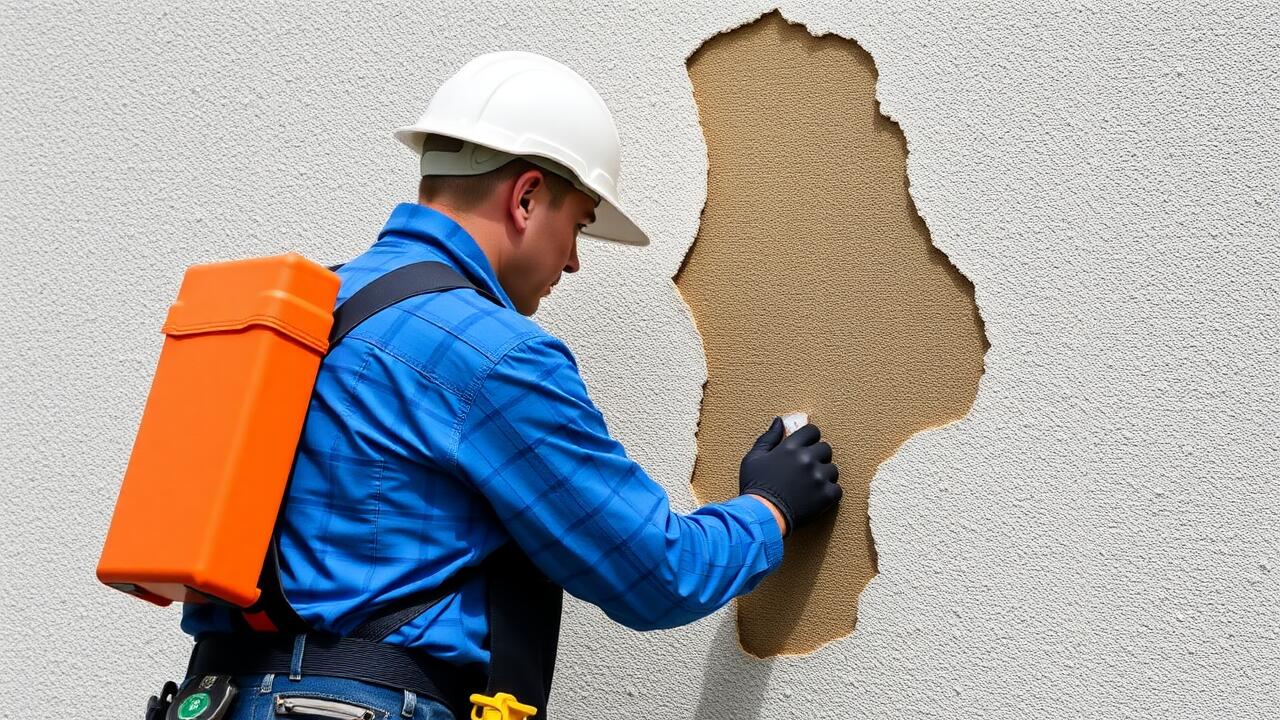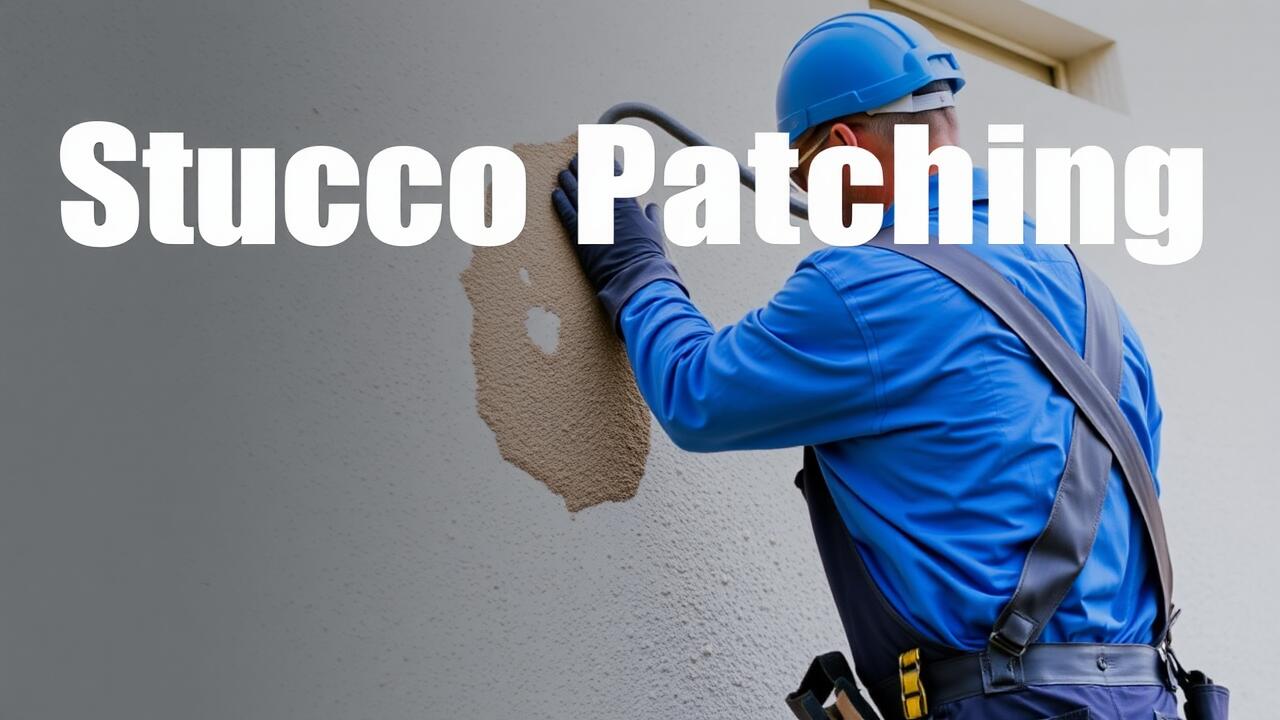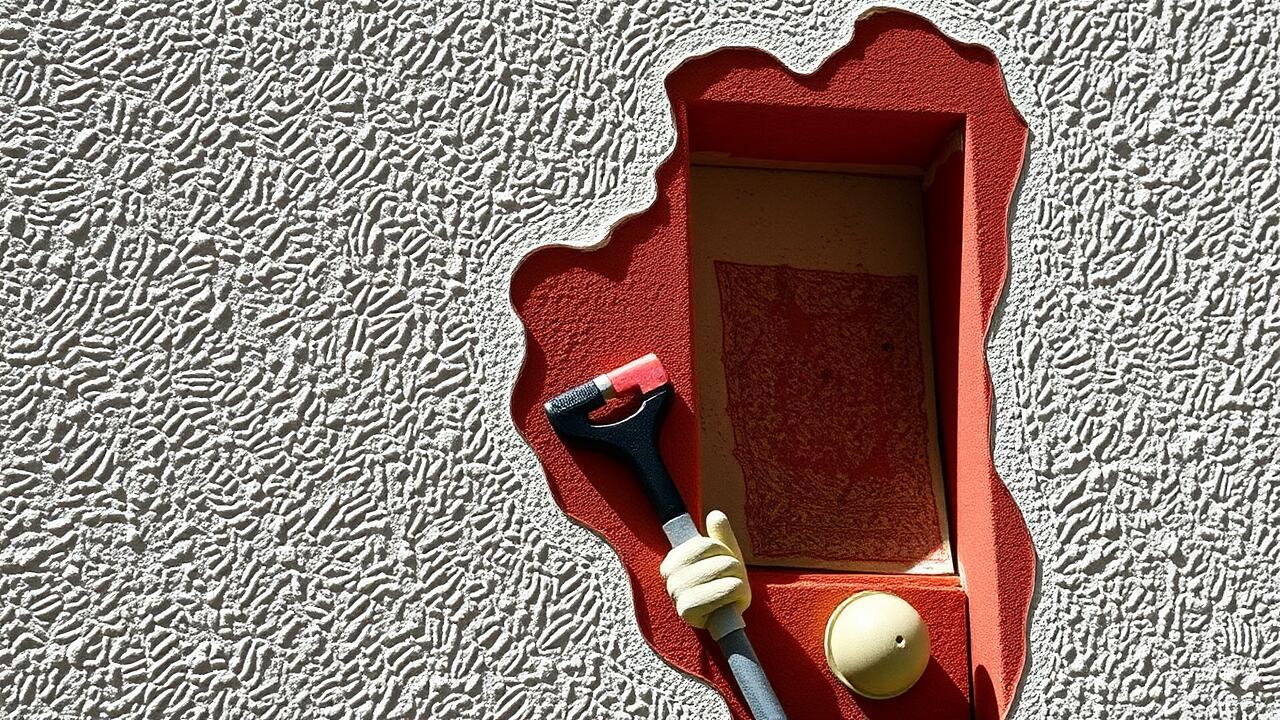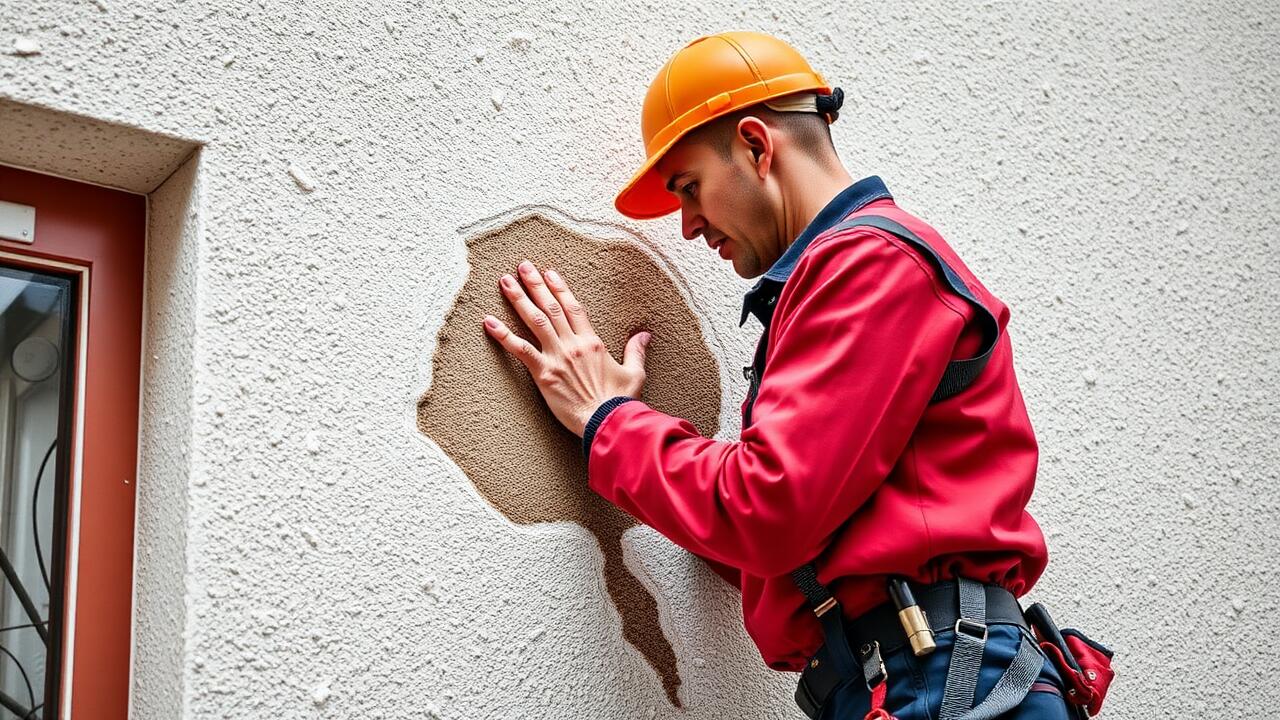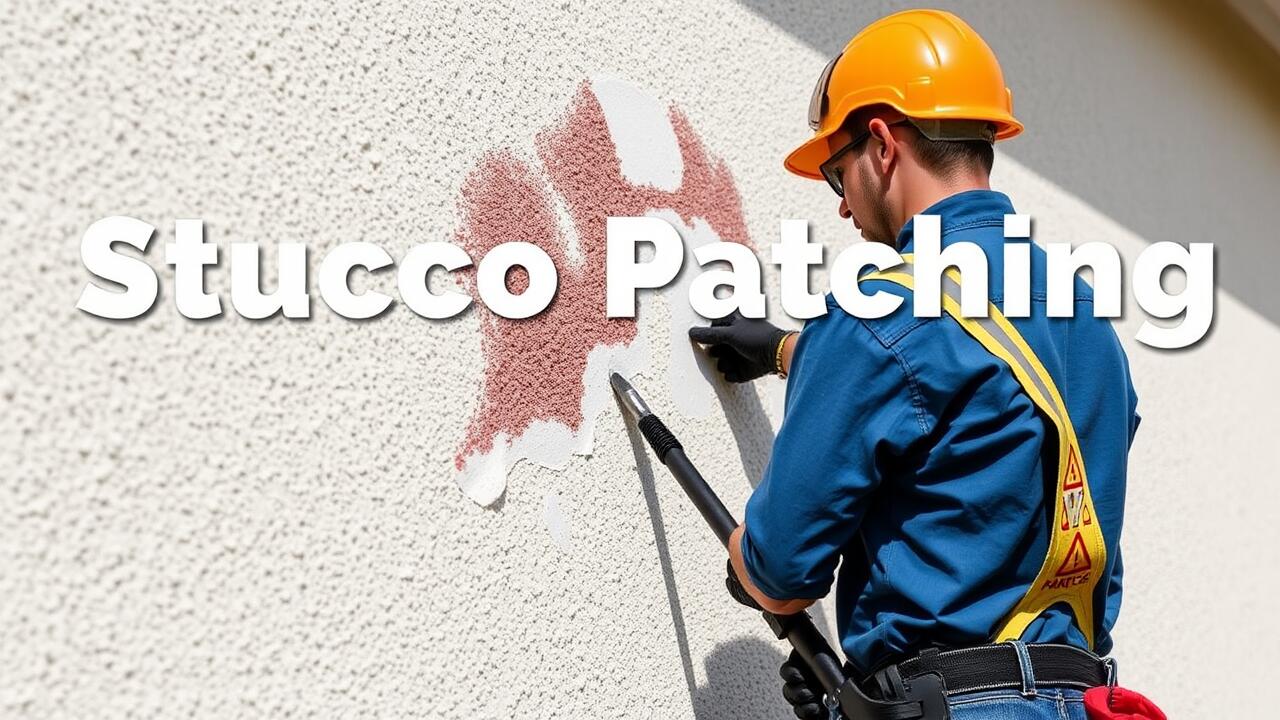
The Role of the Insurance Adjuster
Insurance adjusters play a critical role in evaluating stucco damage claims. They assess the extent of the damage and determine whether the issues are due to covered perils as outlined in the homeowner's insurance policy. Their assessments often involve inspections of the property and consultations with specialists when necessary. Homeowners should ensure they provide detailed information about the damage to facilitate a thorough evaluation.
When it comes to stucco damage, understanding the adjuster's findings is crucial for homeowners. Adjusters will meet with property owners and may suggest reputable local contractors for repairs, such as those specializing in stucco patching in Boyle Heights, Los Angeles. Engaging with these professionals can help reinforce claims and provide the necessary documentation for the insurance process. Being proactive and transparent during this assessment can ultimately lead to a smoother claims experience.
What to Expect During the Assessment Process
When an insurance adjuster arrives to assess stucco damage, they will begin by thoroughly inspecting the exterior of the home. This process often involves examining the overall condition of the stucco, looking for signs of cracks, moisture intrusion, or any other deterioration. Photos may be taken to document the damage, and the adjuster will ask questions about when the damage occurred and any previous repairs that were made. Homeowners should be prepared to provide their policy details and any relevant documentation related to the incident.
After the initial assessment, the adjuster will evaluate the extent of the damage and determine if the necessary repairs fall within the coverage limits of the homeowner's insurance policy. They may also provide recommendations on reputable contractors for repairs, such as those specializing in stucco patching in Westlake, Los Angeles. This referral can be beneficial in ensuring that the repairs are completed to industry standards, which can help prevent similar issues in the future. Homeowners should maintain open communication with the adjuster throughout the process to understand their options and any next steps.
Understanding Your Policy Limits
Homeowners insurance policies come with specific coverage limits that dictate the maximum amount the insurer will pay in the event of a claim. Understanding these limits is crucial for homeowners, especially when dealing with potential stucco damage. Policies typically outline the covered events, the types of damages included, and any exclusions that may apply. Homeowners should review their policies to identify any specific provisions relating to stucco and its maintenance. Additionally, some policies may include endorsements or riders that can provide additional coverage, particularly for homes located in regions prone to particular types of damage.
When a homeowner experiences stucco issues, knowledge of policy limits can significantly affect how much financial help they receive. For instance, standard limits may not suffice to cover extensive repairs often needed for stucco, especially in areas like Echo Park, Los Angeles, where aging structures may be more susceptible to deterioration. Homeowners should also consider the costs associated with services such as Stucco Patching Echo Park, Los Angeles, which can vary widely. Consulting with an insurance agent can help clarify these limits and ensure that adequate coverage is in place to handle future repairs.
How Coverage Limits Impact Your Claim
Homeowners insurance policies often come with specific coverage limits that determine the maximum amount the insurer will pay for repairs. If the cost of repairing stucco damage exceeds these limits, the homeowner may be left to cover the remaining expenses out of pocket. Understanding these limits is vital for property owners who want to effectively navigate claims. For instance, if a claim arises for extensive damage due to water intrusion, knowing your policy's coverage cap will help set realistic expectations.
In areas like Koreatown, Los Angeles, where stucco is a common exterior finish, maintaining the property can be crucial. If a homeowner has a limited policy, they may face challenges when needing repairs. Seeking professional services for stucco patching Koreatown, Los Angeles becomes a strategic decision to ensure that repairs align with the insurance coverage. By regularly reviewing and possibly updating insurance policies, homeowners can safeguard against potential discrepancies between repair costs and claim limits.
Preventing Stucco Damage
Regular maintenance is essential for preventing stucco damage. Homeowners should routinely inspect the stucco exterior for cracks or signs of water infiltration. Addressing minor issues promptly can prevent more extensive damage down the line. Applying a quality sealant can also enhance waterproofing and extend the life of the material. For those in specific areas like Mar Vista, Los Angeles, utilizing local services such as Stucco Patching Mar Vista, Los Angeles, can help in addressing issues quickly and effectively.
Additionally, proper drainage systems should be in place to divert water away from the foundation. This minimizes the risk of moisture buildup, which can cause cracks and deterioration in stucco surfaces. Trimming back shrubs and trees that are in close proximity to the home allows for better air circulation and reduces the chances of mold growth. Keeping gutters clean and directing downspouts away from the property helps protect the stucco from prolonged exposure to water, further enhancing its durability.
Maintenance Tips for Homeowners
Regular maintenance of stucco surfaces is essential to prolong their lifespan and prevent costly repairs. Inspecting the stucco for cracks and damage should be done periodically. These small issues can quickly escalate if left unaddressed. When repairs are necessary, consider professional assistance. Services like Stucco Patching Boyle Heights, Los Angeles, specialize in addressing these concerns effectively.
Keeping the stucco surface clean is equally important. Dirt, mold, and mildew can accumulate over time, impacting the material's integrity. Gentle washing with water and soap can help maintain its appearance and prevent damage. Additionally, pay attention to the landscaping around your home. Overgrown branches or shrubs can scrape the stucco, leading to wear and tear. Consistent upkeep will help protect your investment in your home.
FAQS
Is stucco damage covered by homeowners insurance?
Yes, stucco damage may be covered by homeowners insurance, but it depends on the specific circumstances and the terms of your policy. It's essential to review your policy and discuss with your insurance provider for clarification.
What types of stucco damage are typically covered?
Homeowners insurance often covers stucco damage caused by sudden and accidental events, such as severe weather, fire, or vandalism. However, damage resulting from maintenance issues or wear and tear may not be covered.
How does the insurance adjuster assess stucco damage?
The insurance adjuster will evaluate the extent of the damage by inspecting the affected areas, taking photographs, and reviewing any relevant documentation. They may also consider the cause of the damage and your policy's coverage limits.
What should I do if my stucco damage claim is denied?
If your claim is denied, review the denial letter to understand the reasons. You can appeal the decision by providing additional evidence or documentation that supports your claim, and consider consulting with a public adjuster or an attorney for assistance.
How can I prevent stucco damage to my home?
Regular maintenance is key to preventing stucco damage. This includes inspecting for cracks or holes, cleaning gutters, applying sealants, and ensuring proper drainage around your home. Taking these steps can help minimize the risk of damage and potential insurance claims.
